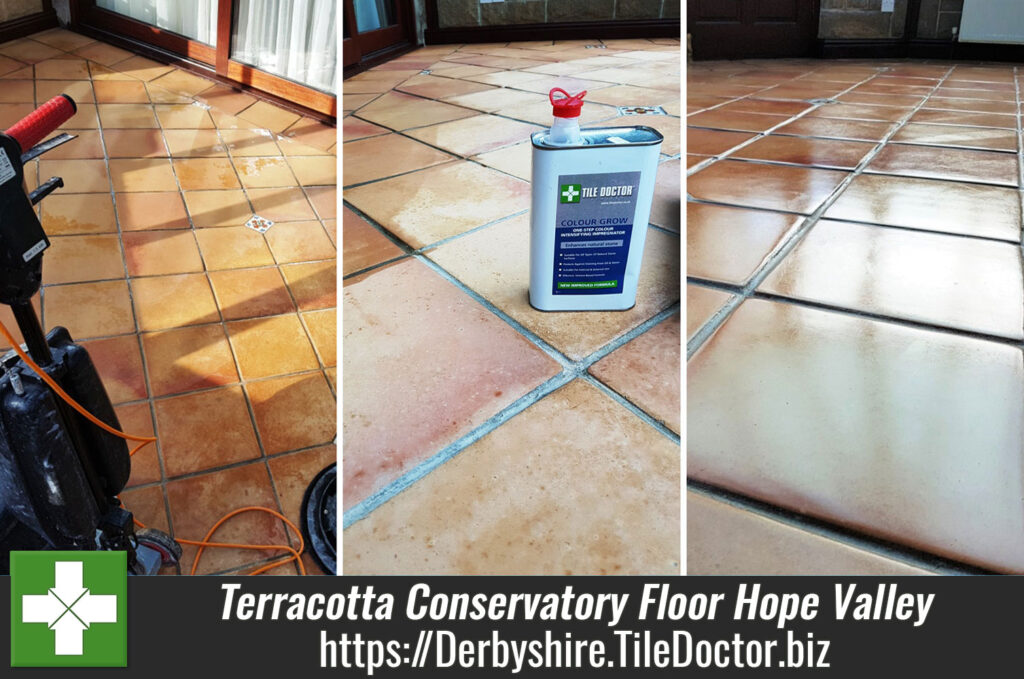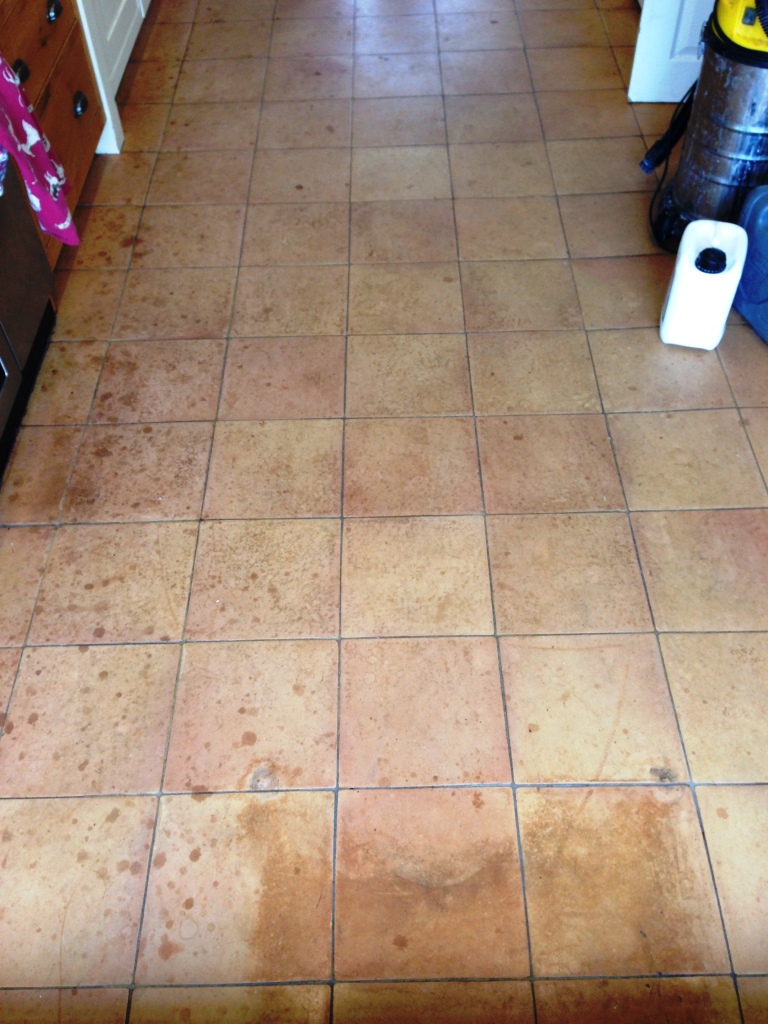Removing Wax and Restoring Colour to a Terracotta Tiled Conservatory Floor
Terracotta Tiles have been around in certain parts of the world for over two millennia; in fact, the word Terracotta means burned earth. The ancient Romans used a variety of Terracotta tiles in their villas and palaces for many centuries.
Terracotta tiles are thicker than most modern tiles, giving them strength and durability. The one big downside to Terracotta, however, is that it has no glaze on the surface and can pick up and store muck and dirt very quickly. If you have ever owned a Terracotta floor before you will be able to relate to this problem.
Such was the dilemma facing our client in rural Hope Valley in the Peak District National Park of Derbyshire. Her Conservatory had been laid with Terracotta tiles around 25 years ago and over the years had been continuously covered with wax. Now, no matter how many times she mopped the floor it never looked clean because all the dirt over many years had been drawn in and sealed into the wax. She called in Tile Doctor to deep clean the floor and treat it with a gloss finish.

Cleaning a Terracotta conservatory floor
I started by removing the layers of wax with Tile Doctor Nano-Tech HBU (a heavy build-up remover that is designed to work where other cleaners won’t) and Tile Doctor Remove and Go, specially formulated to draw out ingrained stains and remove heavy grease build-up. I combined both products into a powerful cleaning cocktail and left them to soak into the floor for about twenty minutes. The solution was then scrubbed into the tile and grout using a black scrubbing pad fitted to a rotary machine. The resultant soil was rinsed off with water and then extracted from the floor using a wet vacuum.
After cleaning I inspected the floor and could see there was still some wax left in the grout between the Terracotta tiles, so I went over the floor with a hand-held steamer and scrub brush, it took some time, but the process was perfect to remove the last traces of wax. Finally, I washed the floor with clean water twice and left it to thoroughly dry overnight.

Colour Restoring and Sealing a Terracotta tiled floor
The following day I went back to seal the floor but found there were still a few areas with higher levels of damp than I would have liked. My solution was to seal the tiles with Tile Doctor Colour Grow. This is a superb colour intensifying matt sealer that provides durable protection and enhance colour but importantly, it’s fully breathable therefore allowing any damp in the tiles to evaporate. I then left the floor to completely dry out, which took five days.
On my return I finished the sealing of the floor with four coats of Tile Doctor Seal and Go. This is a specially formulated water-based blend of acrylic polymers that provides a stain-resistant surface seal and a durable low-sheen finish that works really well on Terracotta.


“Henry did a brilliant job, friendly professional polite and efficient. He kept us fully informed of the procedures he was using. We would not hesitate to use him again or to recommend him to others.”

Professional cleaning of a Terracotta tile conservatory floor in the Peak District National Park
Removing Wax and Restoring Colour to a Terracotta Tiled Conservatory Floor Read More »





